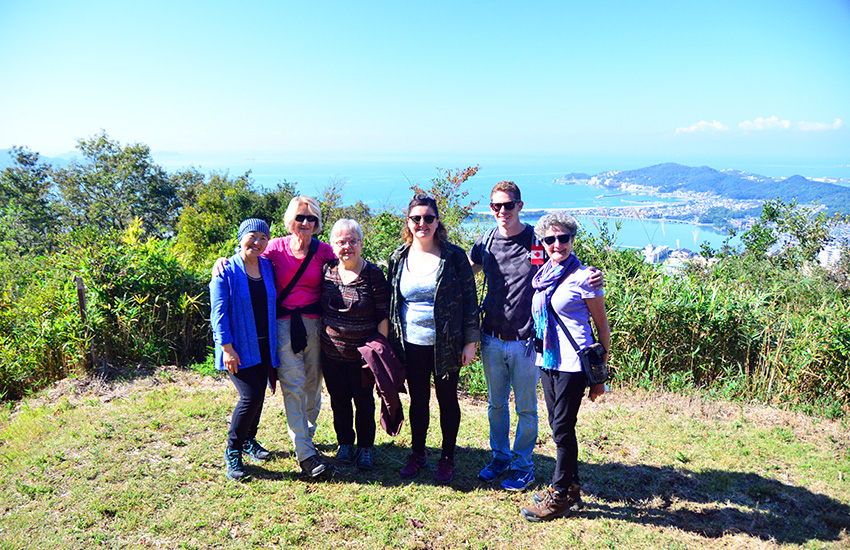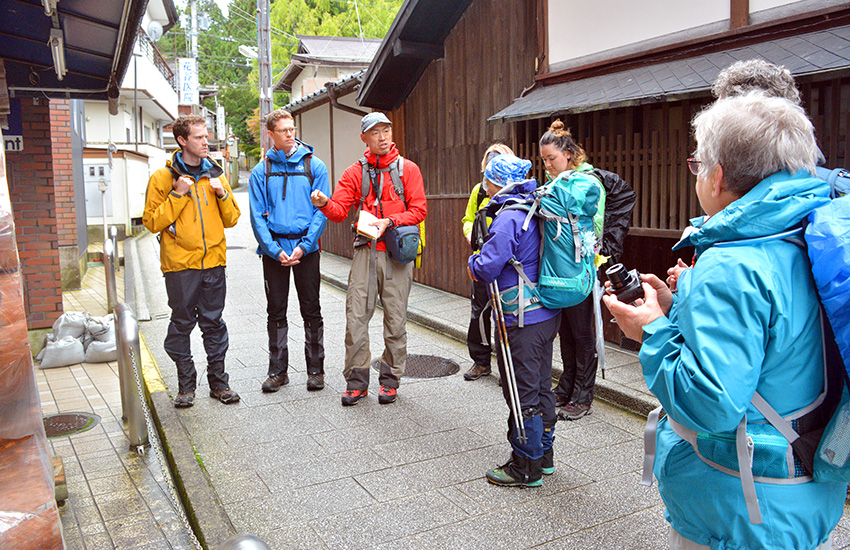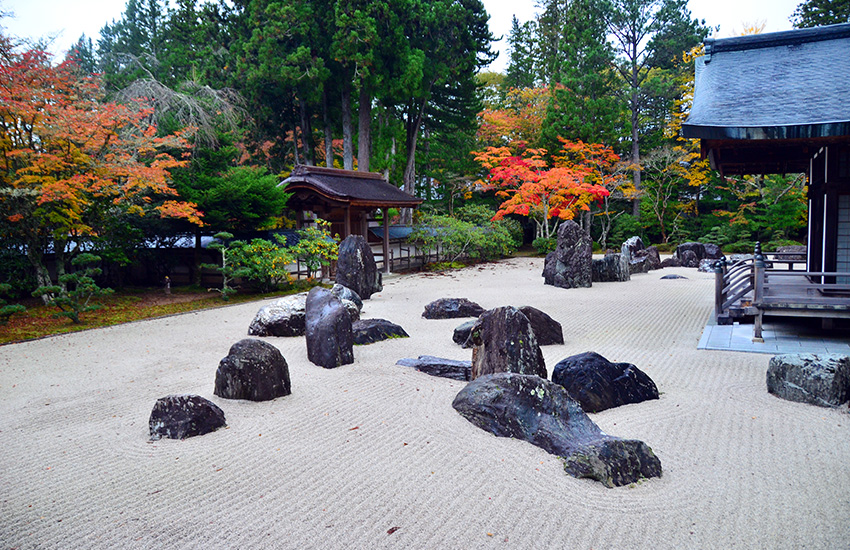KUMANO KODO TRAIL
October 26 – November 5, 2017
Margaret Imai-Compton
Having been a Yamnuska Mountain Adventures client for the past 13 years on their mountaineering, ice climbing and high-altitude expeditions around the world, I was curious to try a “different” kind of adventure. The Kumano Kodo Trail, an ancient network of pilgrimage trails south of Osaka on the Kii Peninsula, was the perfect “change of pace” offered by Yamnuska’s sister company, Great Hikes Japan.
We were a privately guided group of seven family and friends; in fact, three generations of one family was represented! Despite the difference in age (ranging from 26 to 70 years), group dynamics were always harmonious, as we shared a love of movement, Nature and curiosity in exploring the spiritual traditions of ancient Japan.
Everything about this adventure was flawless – except perhaps for the day we hiked in a typhoon – and even then, the thrills and chills were memorable and lasting! Our guides, Hiro Shinozaki and Naoto Motoyama, (both fluently bilingual in Japanese and English), anticipated and organized every detail from accommodation, transfers, daily itineraries and back-up plans, when they were required.
The Kumano Kodo Trail is an ancient network of walking trails that criss-cross the Kii Peninsula, culminating in three sacred shrines that claim (in Japanese mythology) to be the spiritual birthplace of Japan and the Imperial family. In total, we hiked 90 kilometres over six days, using two trails (Kohechi and Nakahechi) that led us to the sacred shrines revered for over 1,000 years by followers of Shinto-ism – the Kumano Hongu Grand Shrine, Kumano Hayatama Shrine and the Kumano Nachi Shrine.
The trails are well maintained, and suitable for a confident, strong hiker. Where there are river crossings, bridges ( some of which are suspended) are well designed for safety and aesthetics. Although there is a lot of elevation gain at the start of every day (upwards of 1,000+ metres), there is an equal amount (or more) of elevation loss before arriving each afternoon at our accommodations, which ranged from a Buddhist Temple to a 300 year old farmhouse, to a series of hot springs hotels. On average, the hikes lasted 6 - 8 hours daily, including breaks for lunch and photo opportunities.
Much of the trail is in deep, mystical forests, and because we were there in autumn, we were gifted with beautiful views of crimson red Japanese maples and deep yellow beech trees. On most days, we periodically broke out of the forest for fabulous panoramic views from high lookout points.
-
At one point, I remarked to Hiro that our adventure was as much a culinary discovery, as it was a pilgrimage! At every destination, the meals were authentically regional, with emphasis on seasonal and locally sourced ingredients. Because it was autumn, many of our meals featured “hot pots” of sukiyaki or “Oden” (root vegetables, lotus root, tofu in broth), mountain vegetables like potatoes, mushrooms and burdock, as well as plum, cucumber and radish pickles, grilled and raw river fish, tempura and savoury baked egg custard. The variety of colour, texture and ingredients at each meal was truly delightful and impressive. If you think Japanese food is only sushi, sashimi and tempura, the variety of meals you encounter will astound you.
Every one of us highly recommends this adventure with Great Hikes Japan/Yamnuska. The support provided at the outset was invaluable (including the comprehensive information and orientation pack); the organization and attention to detail during the trip was impeccable; the ability of our guides to anticipate our needs and respond to individual situations was stellar. When asked to suggest improvements for the trip, one of us quipped, “Maybe eliminate the typhoon on Day One?”, to which the rest of us responded, “No way – how many of us can say we hiked in a typhoon? A genuine typhoon? It’s a great memory!”













